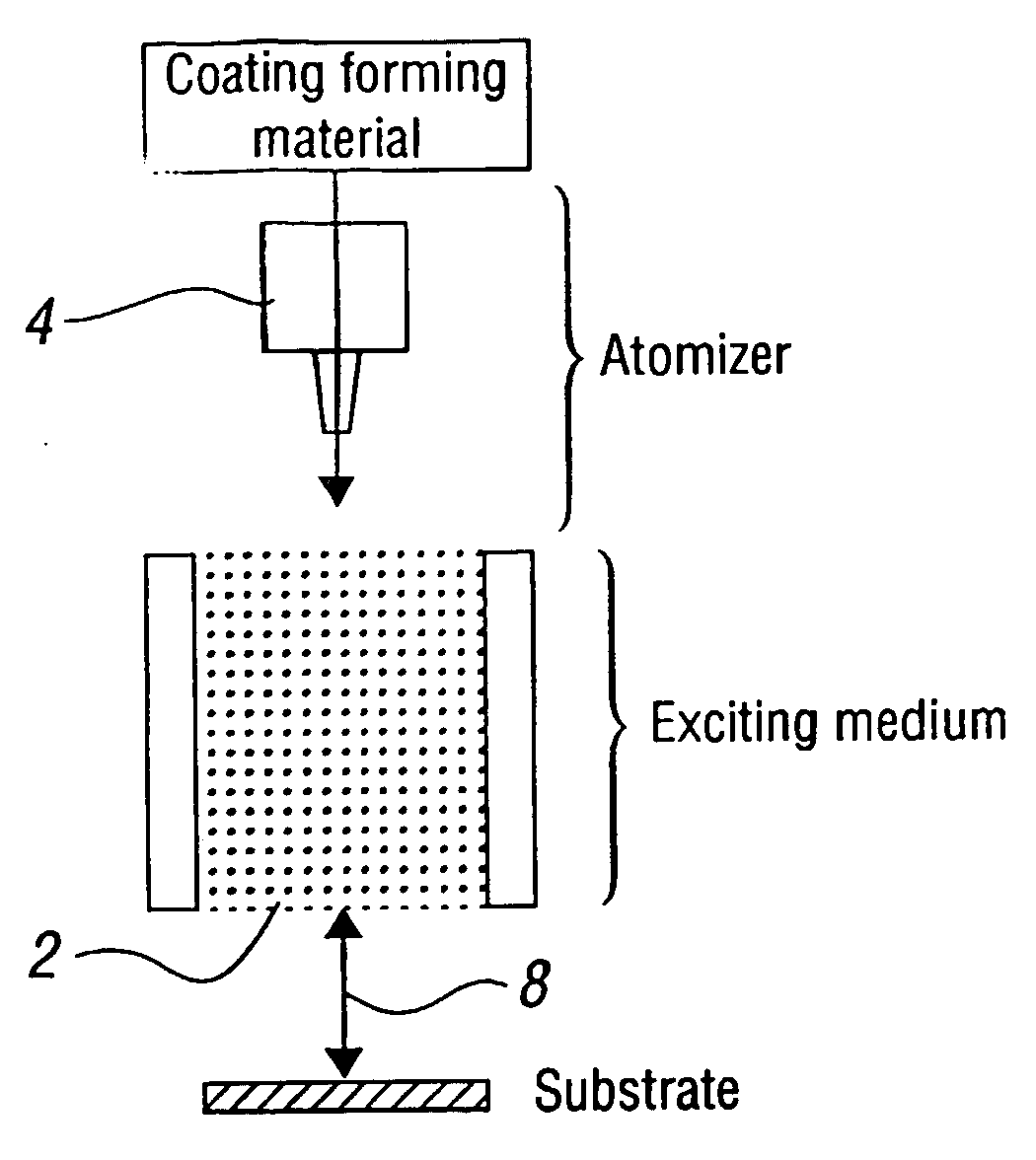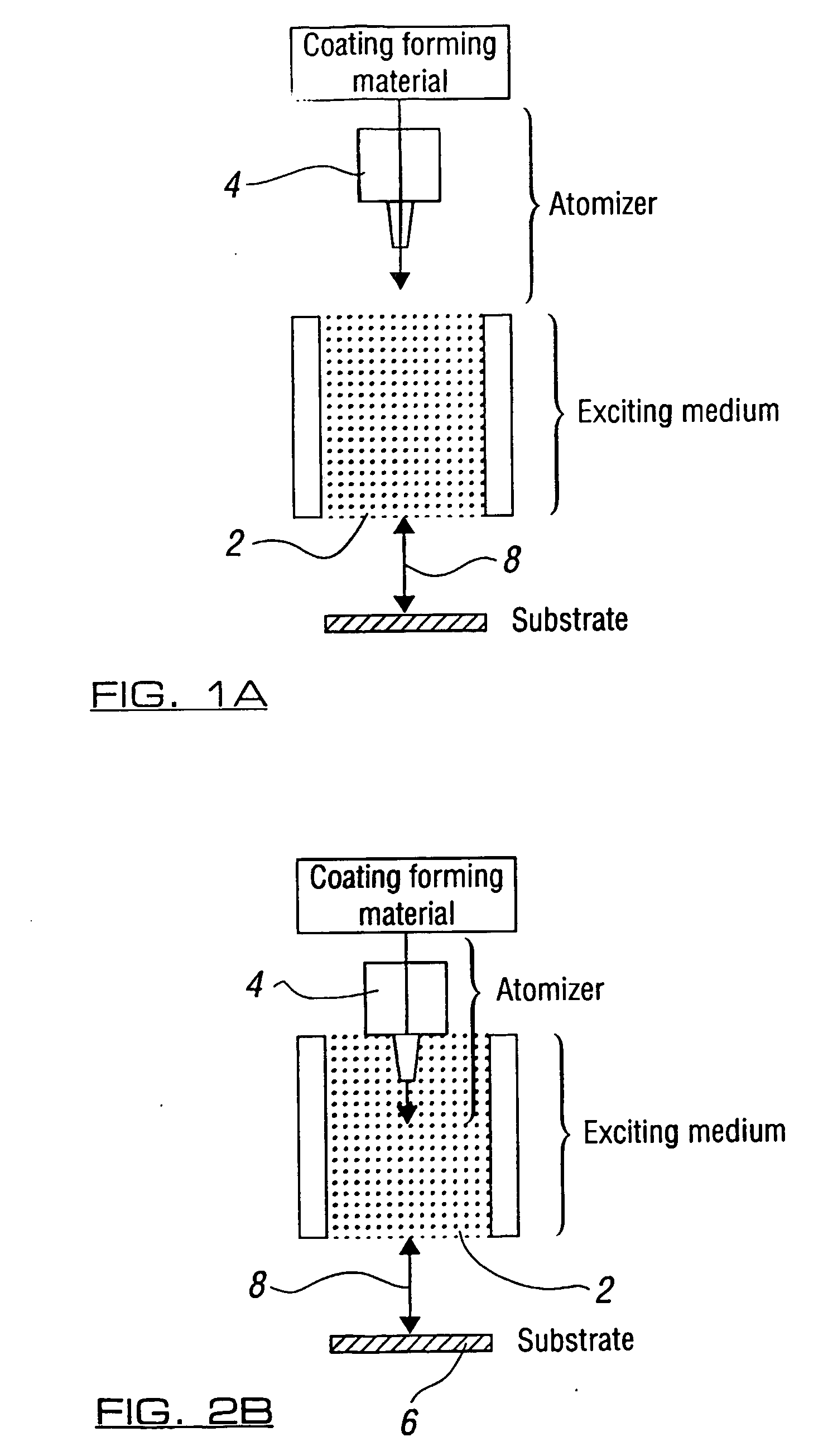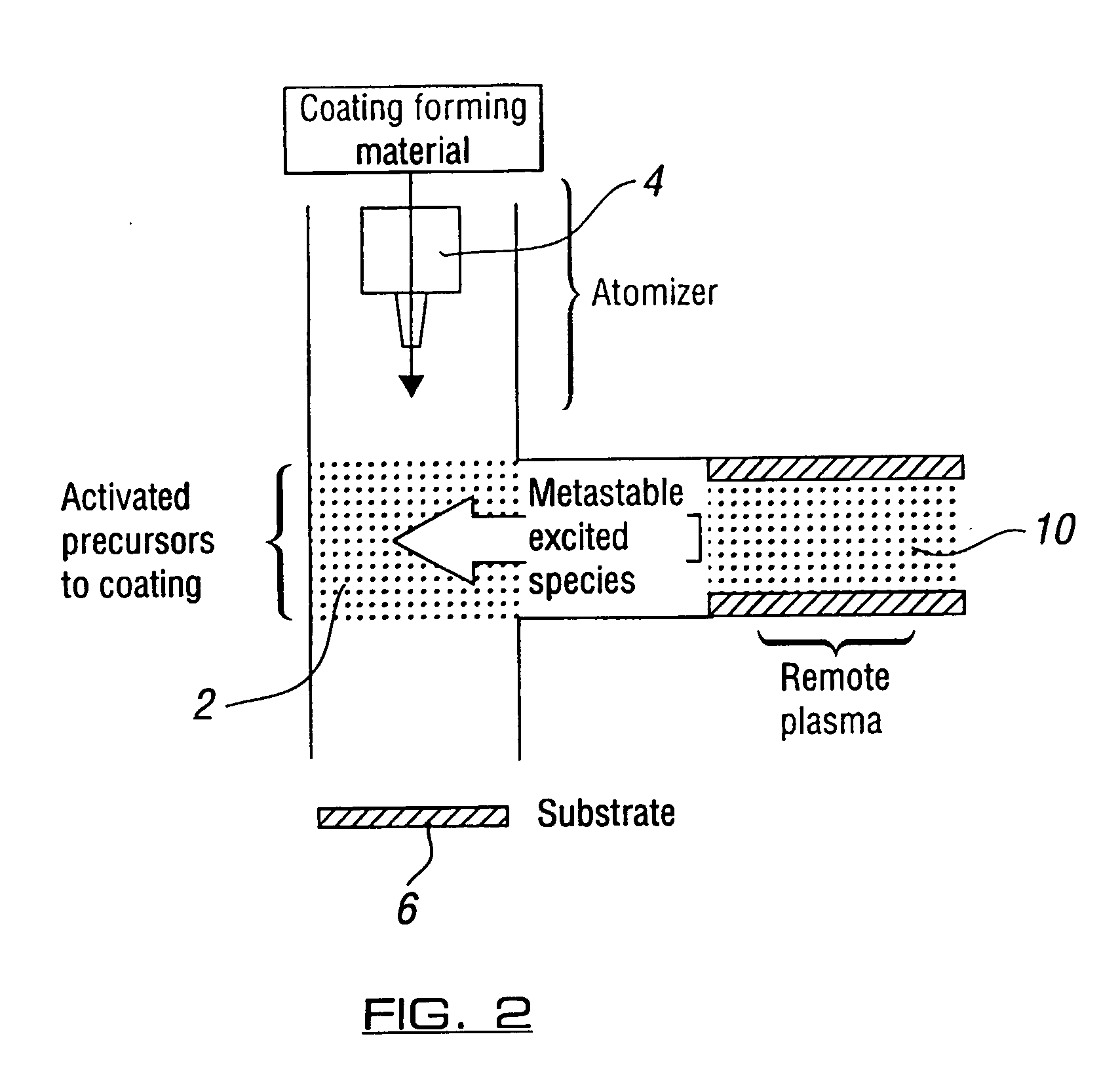Atomisation of a precursor into an excitation medium for coating a remote substrate
a technology of excitation medium and precursor, which is applied in the direction of chemical vapor deposition coating, coating, electrical equipment, etc., can solve the problems of ion etching effect, and reducing the deposition rate, so as to reduce the effect of exciting medium
- Summary
- Abstract
- Description
- Claims
- Application Information
AI Technical Summary
Benefits of technology
Problems solved by technology
Method used
Image
Examples
example 1
Deposition of Hydrophobic / oleophobic Films
[0071] 1H, 1H, 2H, 2H perfluorooctylacrylate is placed into a monomer 12 tube having been purified using repeated freeze-pump-thaw cycles. Coating deposition experiments are performed in an apparatus consisting of an ultrasonic atomisation nozzle 4 connected to a glass vessel 16, itself comprising a radiofrequency plasma excitation generating means 17 and exciting medium volume 2, and a downstream deposition region 14 containing the substrate 6 as shown in FIG. 3. The monomer tube is connected to the ultrasonic nozzle by way of a metering valve 18. The ultrasonic nozzle is itself connected to the glass vessel by way of “nitrile” O-rings 20.
[0072] A “Pirani” pressure gauge is connected by way of a Young's tap to the glass reactor vessel. A further Young's tap is connected with the external, ambient air supply and a third leads to an Edwards E2M2 two stage rotary pump by way of a liquid nitrogen cold trap 22. All connections are grease free....
example 2
Deposition of a Hydrophilic Coating
[0079] In a second illustrative example, the method and apparatus of Example 1 and as illustrated in FIG. 3 are repeated using 2-hydroxyethyl methacrylate as the coating forming material.
[0080] The hydrophilicity of the deposited coatings are assessed by water contact angle measurements with a video capture apparatus (AST Products VCA2500XE) using sessile 2 uL droplets of deionised water. Information on the chemical groups present within the films was obtained using FT-IR (Perkin Elmer, Spectrum One).
[0081] The water contact angle of coatings deposited onto polished silicon wafers was 28±2°, confirming that they are indeed hydrophilic.
[0082]FIG. 4 compares the infrared spectrum of the starting material, 21 with that of a film deposited onto a polished silicon wafer 23. Absorption bands indicative of the carbon-carbon double bond in the monomer are absent in the coating. In contrast, the sought hydroxyl group is shown to be present in both. Thes...
example 3
Deposition Using a Remote Microwave Frequency Excitation Source
[0083] In a third illustrative example of the method, described with reference to FIG. 5, coatings are deposited using an apparatus consisting of an ultrasonic atomising nozzle 4 and a remote microwave plasma source 24 for generating the exciting medium 2. Activation of the coating forming material 25 is achieved by directing its atomised spray as indicated by arrow 27 into the output of the remote microwave plasma, that being the exciting medium 2. The activated coating precursor species are then allowed to deposit onto the substrate 6 remote from the exciting medium. The substrate is disposed in a manner that precludes the direct exposure to species incident from the plasma as shown in FIG. 5 in this case by means of the distance 8 and the bend 26.
[0084] The apparatus is temperature controlled (20-150° C.) and evacuated using an E2M28 two stage Edwards rotary pump by way of a liquid nitrogen cold trap 22.
[0085] The ...
PUM
| Property | Measurement | Unit |
|---|---|---|
| Pressure | aaaaa | aaaaa |
| Composition | aaaaa | aaaaa |
| Flow rate | aaaaa | aaaaa |
Abstract
Description
Claims
Application Information
 Login to View More
Login to View More - R&D
- Intellectual Property
- Life Sciences
- Materials
- Tech Scout
- Unparalleled Data Quality
- Higher Quality Content
- 60% Fewer Hallucinations
Browse by: Latest US Patents, China's latest patents, Technical Efficacy Thesaurus, Application Domain, Technology Topic, Popular Technical Reports.
© 2025 PatSnap. All rights reserved.Legal|Privacy policy|Modern Slavery Act Transparency Statement|Sitemap|About US| Contact US: help@patsnap.com



